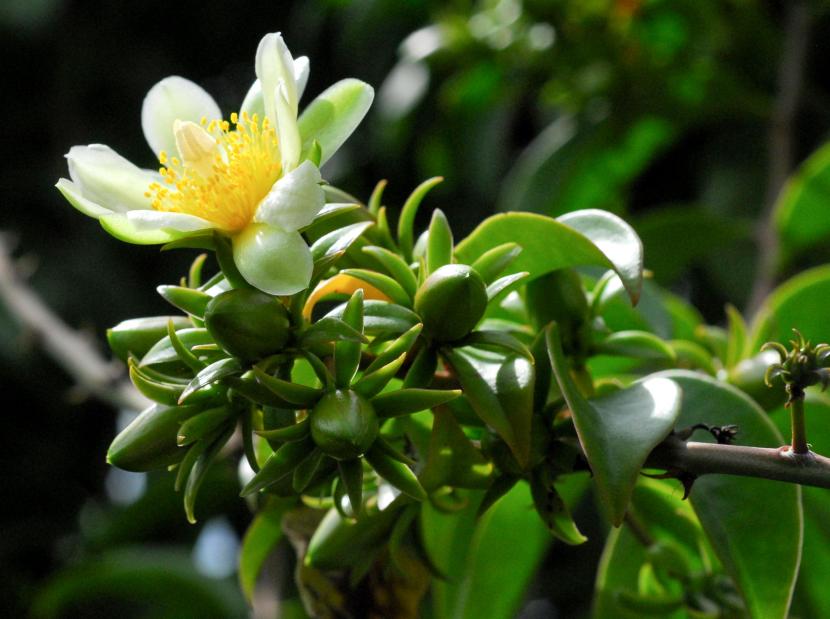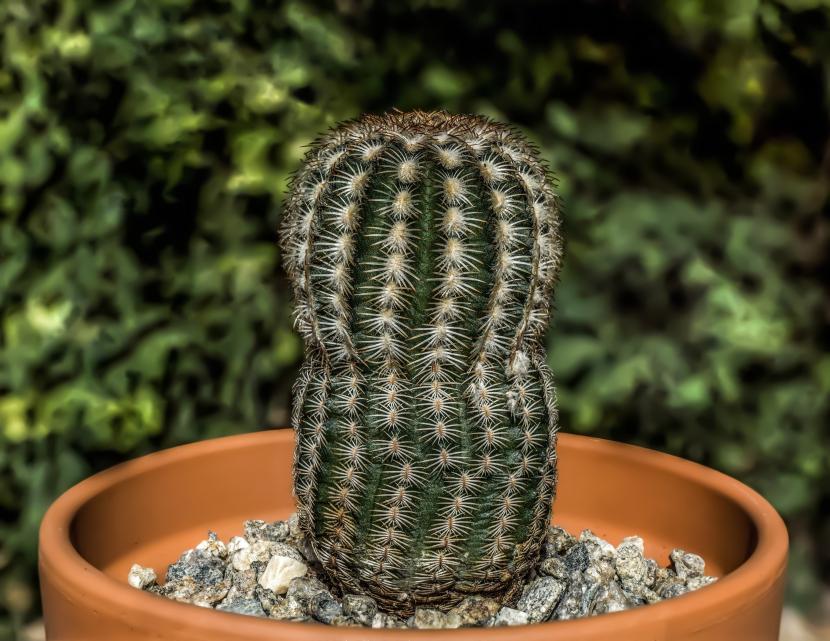
Echinocactus grusonii
When we first enter the world of succulents, it is very common for all of them to look more or less the same. In fact, thinking that a plant is a cactus when it is actually a succulent plant is something that happens very, very often. And things get even more complicated when they tell you that not all cacti have thorns, and not all succulents are harmless.
What are the characteristics of cacti? How to differentiate them from the rest of the vegetal beings that we find for sale in the nurseries?
Origin and evolution of cacti

Pereskia aculeata
Cacti are plants that belong to the botanical family Cactaceae. All of them they are originally from America, concentrating mainly in Central America, but there is an exception: Rhipsalis baccifera, which grows naturally in tropical Africa.
These curious plants began their evolution about 80 million years ago, when what we know today as America was united to the others, thus forming a supercontinent called Pangea, which by then was already in the process of fragmentation.
Researchers haven't found many fossil remains, so at the moment they have only been able to make assumptions. At that time, in Central America the climate was tropical dry, so that Cacti are suspected to have started their evolution as non-succulent plants: with leaves, woody stems, and flowers that produced pollen and seeds.
Today we can get an idea of how those first cacti must have been, since we have received one: those of the genus Pereskia, considered the most primitive genus among cacti.
As the American continent reached its current location, many areas previously covered with plants gradually became arid. To survive, cacti went from green leaves to thorns. Thus, the task of photosynthesis fell on the stems, which were turned green -in most cases- by chlorophyll.
What are their characteristics?

Echinocereus reichenbachii
Now that we know how the evolution of cacti could be, let's see what their characteristics are; that is, what are its parts:
areola
It is the indicative sign of cacti. Are are found in the ribs, and they are very important: from them arise the thorns, the flowers and sometimes the stems.
Thorns
In these plants they are known as leaf spines. They are about acute formations provided with vascular tissue (that is, they have their own food supply). They can be of various types: long up to 30cm, short 1mm, thick, very thin, curved or straight.
Many species of cacti have central spines, which are the thickest and longest, and the radial ones, much thinner and more numerous.
Flowers
They are solitary and often hermaphroditic. Tepals are arranged in a spiral, which makes them look quite similar to petals. These, when joining, form a periantic tube. The androecium is made up of numerous stamens, usually yellow in color; and the gynoecium is made up of 3 or more carpels (modified leaves that contain one or more ovules).
Fruits
The fruits they usually measure between 1 and 5cm in length. Once ripe, they remain closed until they decompose.
Seeds
Conclusion very very small, less than 0,3cm in diameter. They are usually black and hard.
Stem
The stem is succulent, which means that it stores water. Three main forms are distinguished:
- cladode: the stem is flattened, racket-shaped. Example: Opuntia sp.
- columnar: the stems are cylindrical in shape and grow very erect. Examples: Pachycereus pringlei or Carnegiea gigantea.
- Globose: the stem takes a spherical shape. Examples: Ferocactus sp or Echinocactus grusonii.

Copiapoa taltalensis
If you have doubts, do not leave them in the inkwell 😉.
I feel that I have found the goose that lays the golden eggs on your blog, each article is substantial to understand the world of succulent plants: 3
Thanks for everything
Hi Elsy.
Thank you very much for your comment. We are glad you like the blog 🙂
A greeting.